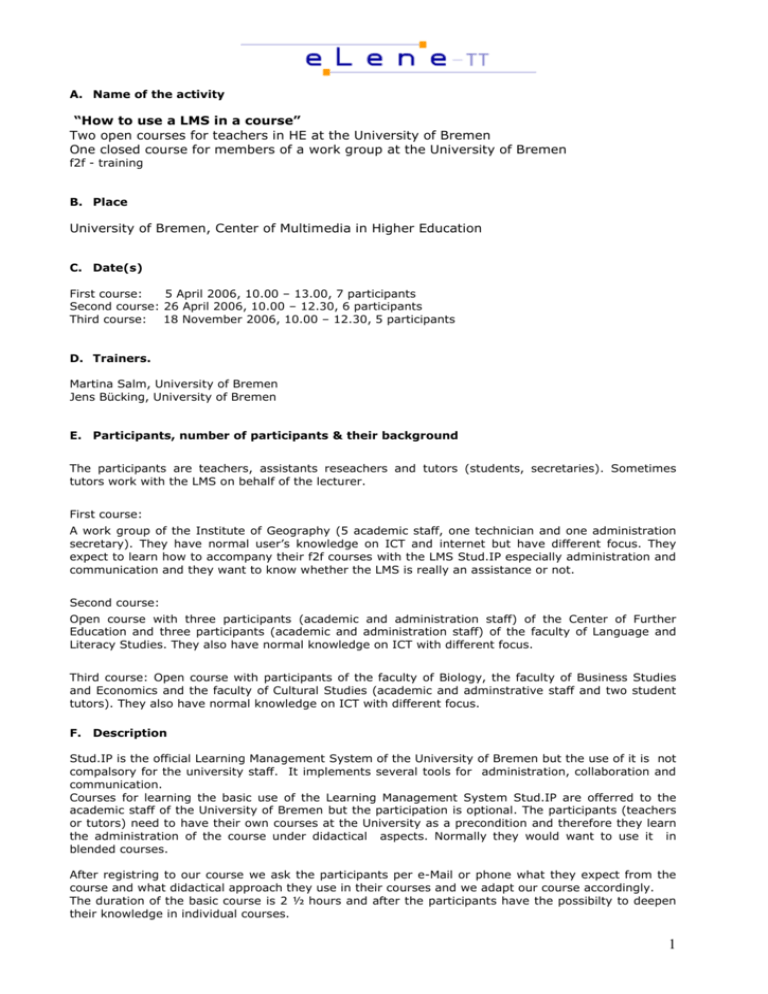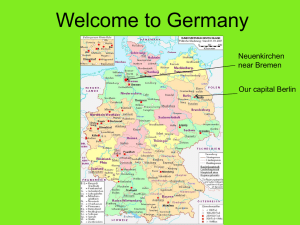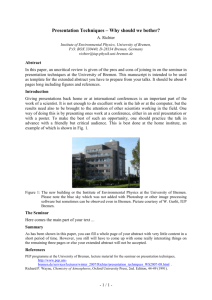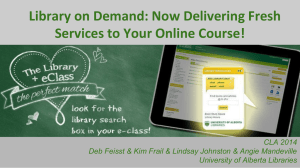report_course_how_to_use_a_LMS_in_a_course
advertisement

A. Name of the activity “How to use a LMS in a course” Two open courses for teachers in HE at the University of Bremen One closed course for members of a work group at the University of Bremen f2f - training B. Place University of Bremen, Center of Multimedia in Higher Education C. Date(s) First course: 5 April 2006, 10.00 – 13.00, 7 participants Second course: 26 April 2006, 10.00 – 12.30, 6 participants Third course: 18 November 2006, 10.00 – 12.30, 5 participants D. Trainers. Martina Salm, University of Bremen Jens Bücking, University of Bremen E. Participants, number of participants & their background The participants are teachers, assistants reseachers and tutors (students, secretaries). Sometimes tutors work with the LMS on behalf of the lecturer. First course: A work group of the Institute of Geography (5 academic staff, one technician and one administration secretary). They have normal user’s knowledge on ICT and internet but have different focus. They expect to learn how to accompany their f2f courses with the LMS Stud.IP especially administration and communication and they want to know whether the LMS is really an assistance or not. Second course: Open course with three participants (academic and administration staff) of the Center of Further Education and three participants (academic and administration staff) of the faculty of Language and Literacy Studies. They also have normal knowledge on ICT with different focus. Third course: Open course with participants of the faculty of Biology, the faculty of Business Studies and Economics and the faculty of Cultural Studies (academic and adminstrative staff and two student tutors). They also have normal knowledge on ICT with different focus. F. Description Stud.IP is the official Learning Management System of the University of Bremen but the use of it is not compalsory for the university staff. It implements several tools for administration, collaboration and communication. Courses for learning the basic use of the Learning Management System Stud.IP are offerred to the academic staff of the University of Bremen but the participation is optional. The participants (teachers or tutors) need to have their own courses at the University as a precondition and therefore they learn the administration of the course under didactical aspects. Normally they would want to use it in blended courses. After registring to our course we ask the participants per e-Mail or phone what they expect from the course and what didactical approach they use in their courses and we adapt our course accordingly. The duration of the basic course is 2 ½ hours and after the participants have the possibilty to deepen their knowledge in individual courses. 1 Objectives The main objective is to overcome their inhibitions using ICT and to develop competencies using ICT in their courses. Often they flinch from the time and the work they have to spend in learning. So we divide the courses in basic and advanced but usually the basic course is enough for the teacher needs. After completing a course, participants need individual support at their workplace, per mail or phone (some kind of helpdesk). The specific objectives are - how to administrate a f2f course in a virtual environment. participants have to reflect how they design their f2f course and what changes are required if it’s a blendend course in a virtual environment. show the different possibilties for collaborative work (discussion forum, wiki) and when it’s resonable to adopt them. show the different possibilities for communication (messages, mail, chat) and what to use when. participants need to think of the students - do they have the knowledge and competencies to deal with this offer? G. evaluation We make no specific evaluation of the courses because we make once a year an overall survey concerning the LMS and during which we ask especially for the courses. The customers feedback are good and the participants of our courses normally use the LMS for their own courses and work as multiplicators in their faculty. H. material I. Document: “Stud.IP for teachers - basics”, german version LMs Stud.IP criteria, tools and guidelines.which criteria, tools and guidelines addressed the teacher training activity? Tools We work with our LMS Stud.IP and a wiki. We checked the tools and ressources of the partners but nothing fits exactly to the course. Guidelines We use especially the guideline Interaction, communication & collaboration because this issues changes for the teachers when they use ICT and often they have no imagination of this and what it means for them. Criteria Our courses are designed considering the following criteria: 1. Teachers training actions goals should be to develop competencies. 2. Teachers training practice should be designed using scaffolding principles for active learning. 3. Teachers training should be adapted to the different delivery systems. 4. Teachers training should respect diverse training / learning. 2





